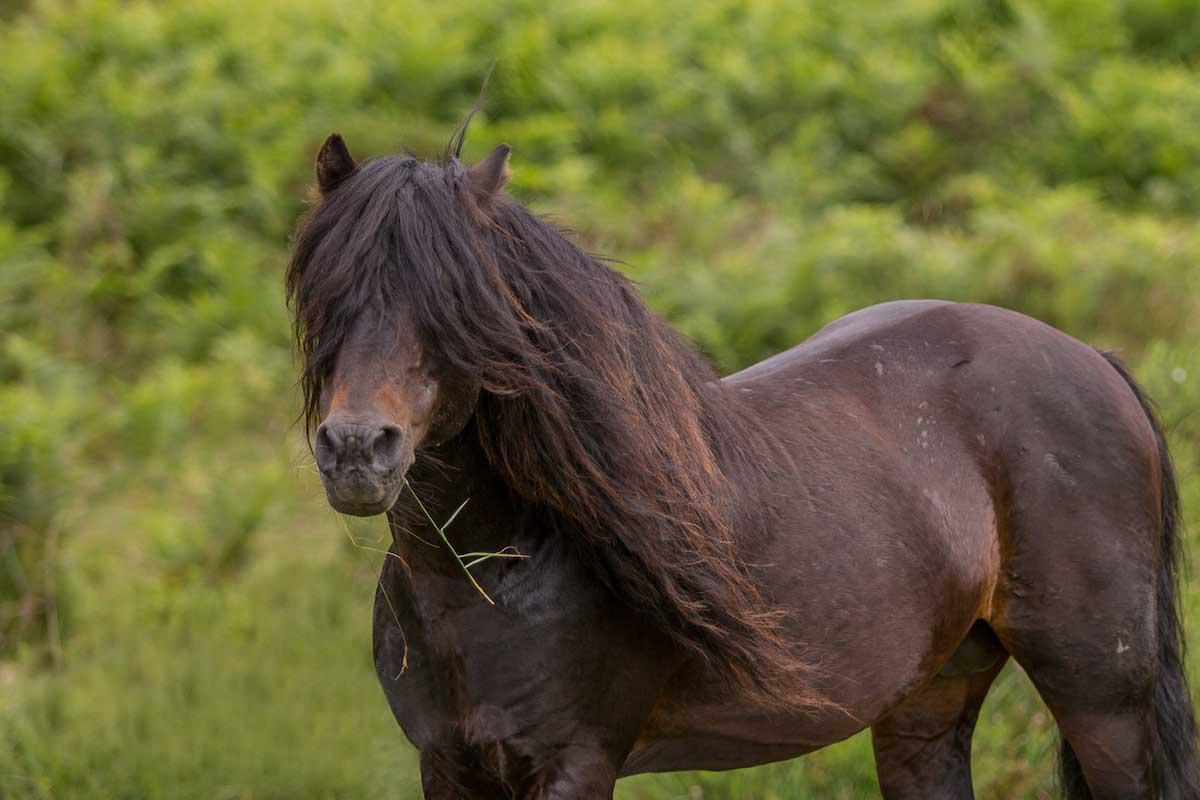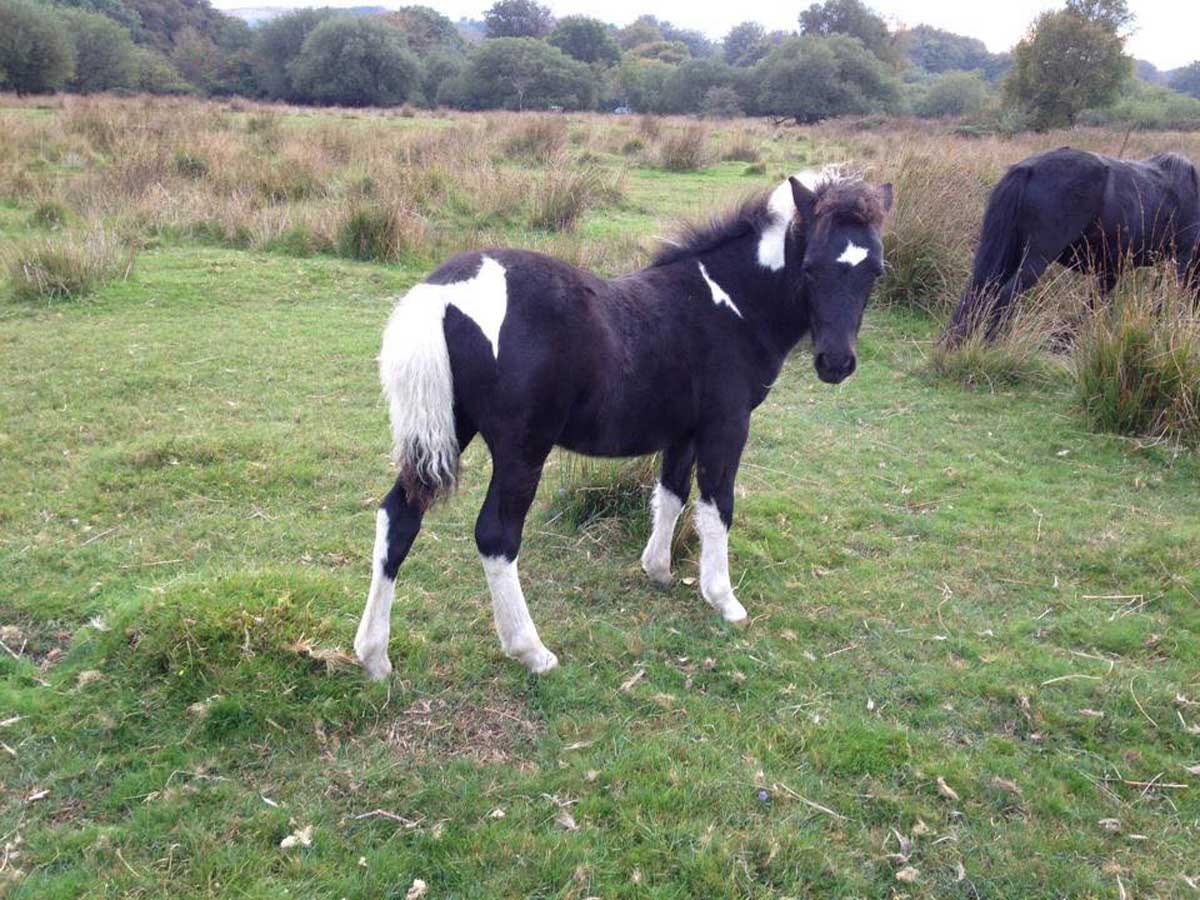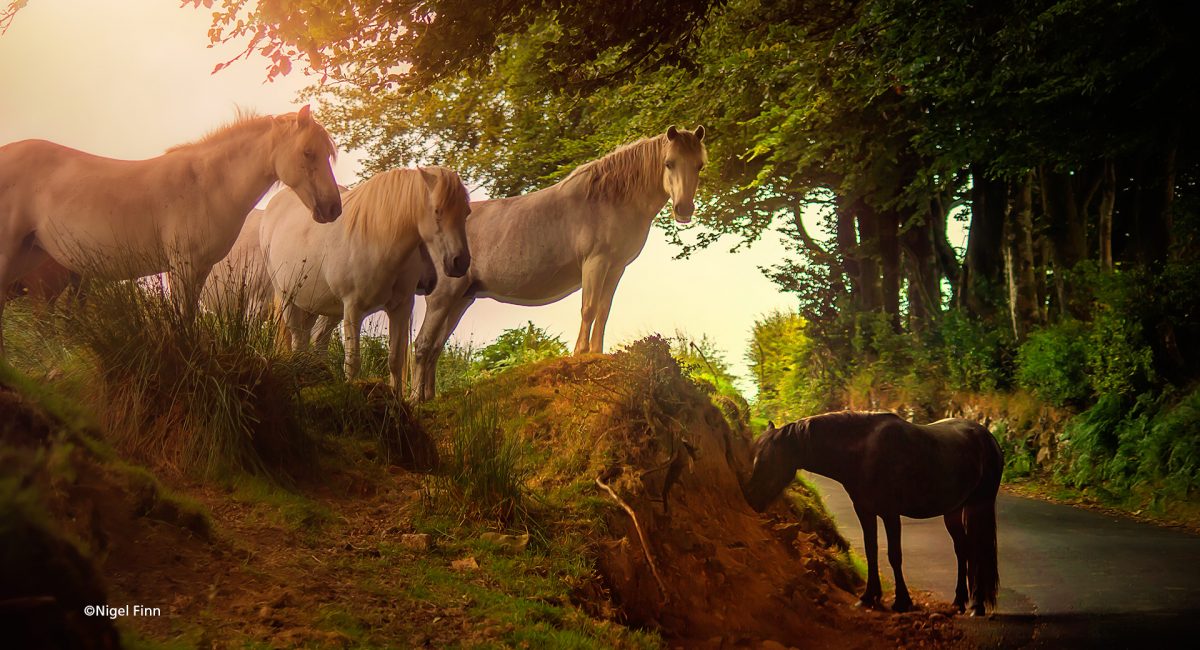
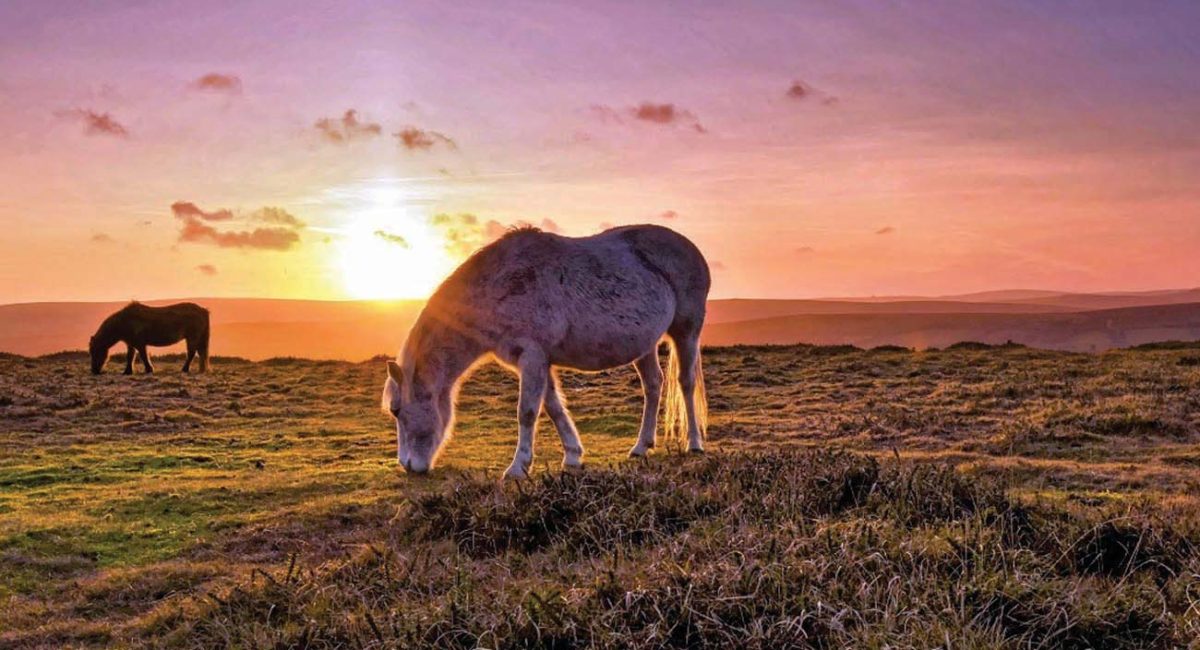
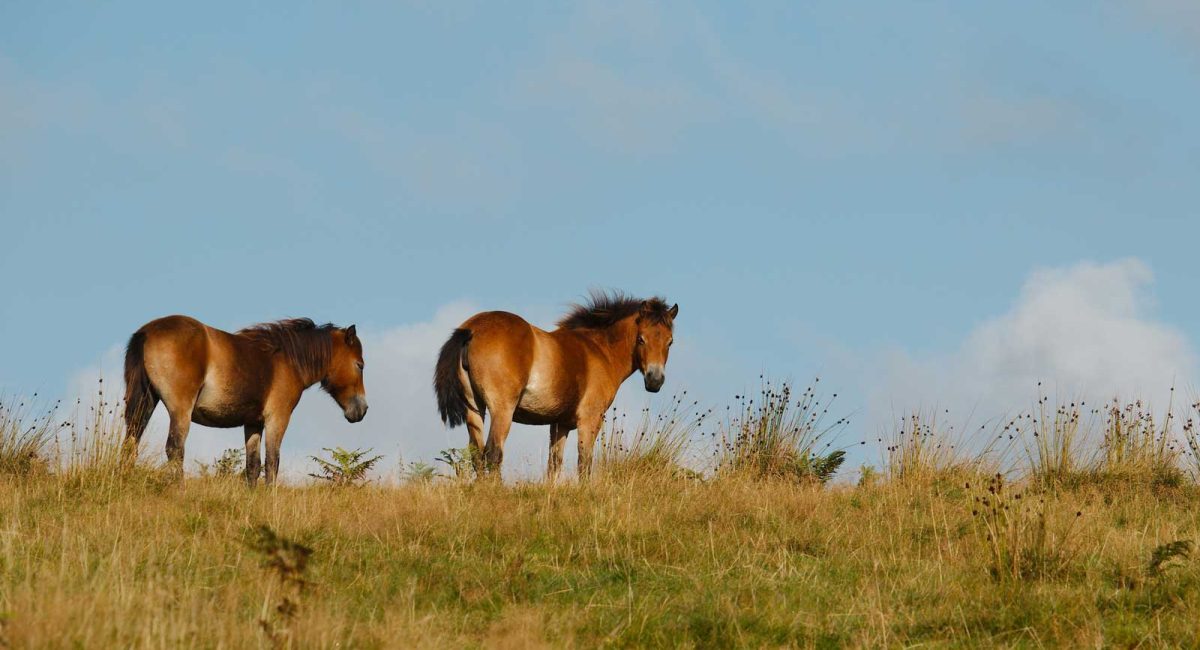



Dartmoor Ponies
A truly iconic sight
There is no more iconic sight on Dartmoor than a herd of ponies grazing together, with stunning, majestic Dartmoor as their backdrop. They have been here a long time, hoof prints found on Dartmoor during an archaeological dig were found to be 3,500 yrs old!
Written records of ponies on the moor go back as far as AD1012, and in the mid 1800s ponies were used to transport granite from the moorland quarries.
In 1950 it is said there were around 30,000 ponies on the moor, now we only have approximately 1500, with herds of pedigree Dartmoor ponies, Heritage ponies, Hill ponies, Shetlands, Welsh, and Spotted ponies spread all across the moor.
All the ponies are owned by various Dartmoor Commoners, (the farmers and residents of the Moor who have grazing rights on the open moor), and with these rights comes the responsibility of seeing that the herds of ponies are kept healthy.
Injured Ponies
If you see a pony (or any other livestock) is injured or ill, please call the Dartmoor Livestock Protection Officer on 07873 587561 Read more www.dlps.org.uk
PLEASE…do not feed or pet the ponies, they may kick or bite no matter how adorable they are!
About The Ponies
The ponies are very hardy and actually thrive on Dartmoor despite the harsh winter weather and poor vegetation. In fact, by grazing the moor they play a vital role in maintaining a variety of habitats and supporting wildlife. They become very adept at knowing where to shelter, where the water sources are and where to go for the best spring grass. Those of us who live on the moor have learned to keep our gates closed at all times as they love to come into the residential areas and take advantage of the village greens and gardens!
Most have not been handled, so you should not approach them too closely, or feed them. Because of their calm temperament, strength and sure-footedness, when taken from the moor as foals and trained on, the ponies have been used for many purposes over the years, which has led to the breeding of the different types seen on the moor today. Down through history they have been used for riding and driving, pit ponies, shepherding, taking the family to market or even carrying the postman delivering mail.
Purebred Dartmoor Ponies
There are herds of beautiful pedigree Dartmoor ponies living out on the commons all year-round. They have the genetics to thrive in the harshest of conditions, with their dense, thick coats and thick manes & tails. Dark coats give great protection from sunburn and neat, hard black feet are perfect for traveling many miles a day across granite strewn moorland. They can be up 12.2hands high and are of solid colours only
They have the perfect metabolism to prosper in tough and uncompromising conditions, and have an exceptional temperament. Knowledge of where to shelter, drink or graze is passed down from generation to generation.
Several of the pedigree pony breeders run their stunning pedigree stallions out on the moor with their herd of mares, breeding naturally at liberty and some bring their mares in to their farms for the breeding season.
Pedigree ponies bred, born and raised on Dartmoor have gone on to have spectacular success as riding, show, and driving ponies all over Europe, and many have gone to other studs to improve the quality and type of ponies bred there.
The pedigree Dartmoor pony is now an endangered rare-breed, (www.rbst.org.uk) but fortunately there are dedicated breeders doing their best to increase the numbers and value of these lovely native ponies.
Several Shlstone Rocks Stud ponies bred here on the moor have been exported by Tracey Elliott-Reep to New Zealand to start a brand new stud, where the mission is to further establish the Dartmoor pony breed in NZ, with the future vision of using the ponies to help children overcome challenges, whether these are physical, intellectual or emotional.
I think it’s safe to say that the Dartmoor Pony is one of Dartmoor’s loveliest exports!
Read more www.dartmoorpony.co.uk

Traditional Dartmoor Ponies – also known as ‘Heritage’ ponies
Traditional Dartmoor ponies are single coloured, with long flowing manes and tails, and reaching no more than 12.2hh at maturity. Bred on the Moor, they have the same colouring and size as recognised by the Breed Standard for Pedigree Dartmoor ponies.
Ponies may be registered with the Dartmoor Pony Society on their Supplementary Register – ie they have been bred in the Dartmoor Pony Moorland Scheme, which enables breeders on Dartmoor to run their high-quality mares with a Pedigree stallion. Over four generations, their female progeny will be eligible for full Pedigree registration.
Tough, hardy, sure footed and with great temperaments, they thrive in the harshest of moorland conditions and have an important role to play in the management of Dartmoor’s stunning landscape and its biodiversity.
The Dartmoor Pony Heritage Trust represents the farmers that breed Pedigree, SR and traditional Dartmoor ponies, providing a wide range of activities to add value to the ponies and find homes for them; to promote their importance to Dartmoor; and to support herd management.
Read more www.dpht.co.uk
Hill Ponies
Many of the ponies that you will see across the moor are known as Hill Ponies. Many have Shetland, Welsh, Arab and Spotted pony breeding mixed in, and can be of any colour, build or size, so they are known as a type of pony rather than a specific breed.
Hardy and tough, they do a great job of grazing the moor alongside the pedigree and heritage ponies and can make lovely children’s ponies as well.
Once they come off the moor during the annual ‘drifts’ some of them are given handling and training to get them used to people so that they can go on to have fabulous lives as family pets, conservation grazers, riding or driving ponies.
There is always a surplus of hill ponies born each year on the commons, and several hard working charities are in operation to find homes for them.
One of the charities that always has ponies of all types looking for adoption or re-homing is Hill Pony Resources – https://hillponyresources.weebly.com
Shetland Ponies
Shetlands were introduced in the early 20th century when they were crossed with moorland ponies to produce small, tough animals capable of working down the mines.
There are many groups of these tiny, hardy and immensely strong ponies all over several different parts of the moor, all different colours amongst them.
They are popular little ponies, and each year at the Chagford Pony Sales you will find many of them listed for sale. The foals are so incredibly sweet they have to be seen to be believed!

Photo by Jocelyn Ryder-Smith

